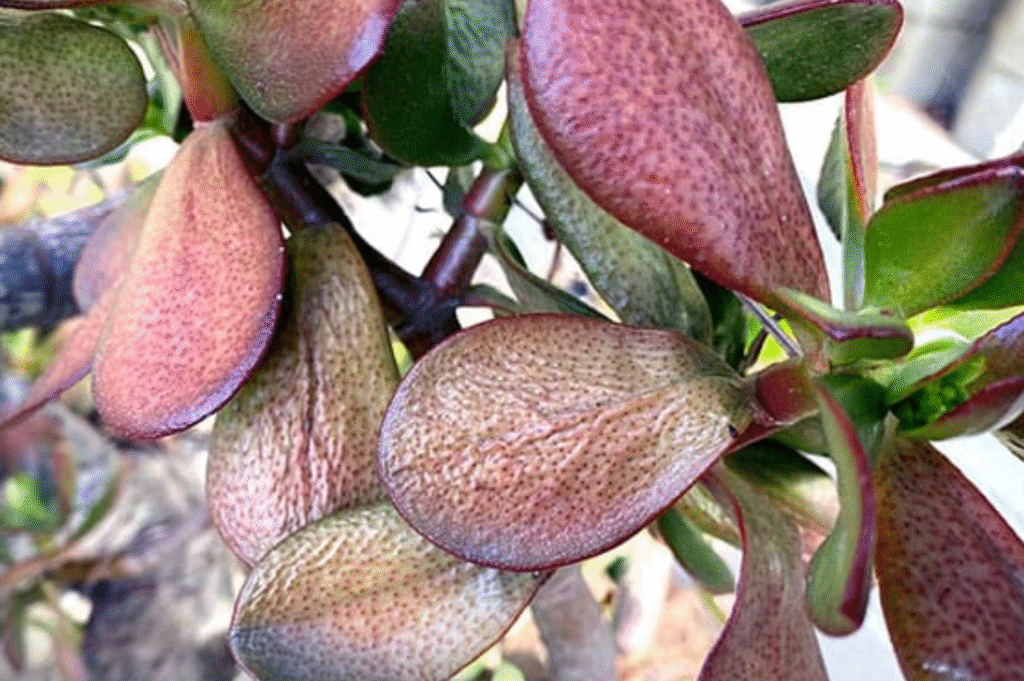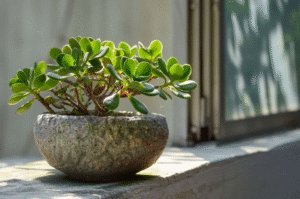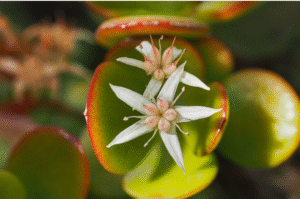Jade plants are prized for their plump green leaves, low maintenance needs, and ability to bring a calming touch to any space. But what happens when your beautiful green jade plant suddenly starts turning purple? Don’t panic, this color shift is common and usually a plant’s way of communicating stress or environmental changes.
In this guide, we’ll explore why your jade plant turns purple, the common causes, and how to fix or prevent it. If you’ve spotted unusual colors creeping into your jade, this article will help you get to the root of the problem (literally).
Is It Normal for Jade Plants to Turn Purple?
Yes, and no. A little purple tint along the leaf edges can be perfectly normal, especially under bright light or cool nights. However, if the entire leaf or plant turns purple or the color becomes intense, it could be a sign that something is wrong.
Jade plants are succulents, which means they store water in their fleshy leaves. When they experience environmental stress, it often shows in their coloring. Purple leaves can be a stress response, and while sometimes harmless, it’s worth investigating.
1. Too Much Sunlight (Sun Stress)
Symptom:
Leaves are turning red or purple on the edges or the whole leaf surface.
Cause:
Jade plants love sunlight, but too much (especially intense, direct afternoon sun) can cause sun stress. This triggers anthocyanin pigment production in the plant, giving it a purple hue as a protective mechanism.
Solution:
- Move the plant to a spot with bright but indirect light, especially during peak summer.
- If indoors, place it near an east or west-facing window.
- Acclimate gradually if you’re moving it from shade to sun.
2. Cold Temperatures or Sudden Temperature Drops
Symptom:
Purpling leaves, especially in winter or after outdoor exposure.
Cause:
Jade plants prefer temperatures between 60°F and 75°F (15°C–24°C). Exposure to cold drafts, chilly nights, or frost can shock the plant, causing its leaves to turn purple.
Solution:
- Keep the plant indoors during winter.
- Avoid placing it near open windows or air conditioners.
- Maintain a consistent temperature around the plant.
3. Underwatering or Dehydration
Symptom:
Wrinkled, purple-tinged leaves that feel dry to the touch.
Cause:
While jade plants don’t need frequent watering, they still require consistent moisture during active growth. Extended dryness can lead to stress and purple coloration.
Solution:
- Water thoroughly when the top 1–2 inches of soil feel dry.
- Use well-draining soil to prevent root rot.
- Don’t let the plant sit in dry soil for weeks.
4. Nutrient Deficiency (Especially Phosphorus)
Symptom:
Slow growth and purplish leaves, especially in older foliage.
Cause:
Lack of essential nutrients, particularly phosphorus, can cause pigmentation issues. Over time, nutrient deficiencies can weaken the plant and cause discoloration.
Solution:
- Use a balanced succulent fertilizer once every 4–6 weeks during the growing season.
- Look for fertilizers with an NPK ratio of 10-10-10 or 20-20-20 diluted to half strength.
- Don’t fertilize in winter.
5. Overwatering and Root Stress
Symptom:
Purple or black leaves that turn mushy or fall off.
Cause:
Ironically, overwatering can also lead to purple leaves. When roots sit in soggy soil, they can’t breathe, and the plant becomes stressed. Sometimes even develops root rot.
Solution:
- Only water when the soil feels dry.
- Ensure the pot has drainage holes.
- If root rot is suspected, unpot the plant, trim rotten roots, and repot in fresh soil.
6. Pot Size and Poor Drainage
Symptom:
Purpling along with drooping or slow growth.
Cause:
If your jade plant is root-bound or the potting mix retains too much moisture, the roots may not get enough oxygen. This stress shows up as leaf discoloration.
Solution:
- Repot every 2–3 years into a slightly larger pot.
- Use a succulent or cactus mix for proper drainage.
- Avoid using garden soil or peat-based mixes.
7. Natural Aging or Genetic Traits
Symptom:
Older leaves gradually develop a purple hue before falling off.
Cause:
Sometimes, it’s just a part of the plant’s life cycle. Some jade varieties (like Crassula ovata ‘Hummel’s Sunset’) naturally develop red-purple tips in bright light.
Solution:
If your plant is otherwise healthy and growing well, there’s no need to worry. Enjoy the colorful display!
Bonus Tips: How to Keep Your Jade Plant Healthy and Vibrant
To prevent purple leaves from becoming a problem, follow these basic jade care tips:
- Place in bright, indirect sunlight.
- Water only when the soil is dry to the touch.
- Use a fast-draining succulent mix.
- Fertilize lightly during spring and summer.
- Protect from extreme heat or cold.
- Keep the pot clean and well-drained.
When to Be Concerned About Purple Leaves
In most cases, purple leaves are a reversible stress response. But if your plant shows other signs like:
- Soft or mushy stems
- Black spots
- Dropping leaves
- Wilting despite watering
…it’s time to act quickly. The issue could be root rot, fungal disease, or pest infestation. Check the roots, repot if needed, and remove any affected parts.
Final Verdict
A jade plant turning purple isn’t always a death sentence; it’s often your plant’s way of saying, “Hey, something’s off!” Whether it’s too much sun, not enough water, or cold stress, the good news is: most of these issues are easy to fix with simple care adjustments.
Keep a close eye on your jade’s environment, and with a bit of attention, it will return to its healthy, vibrant green self in no time.






